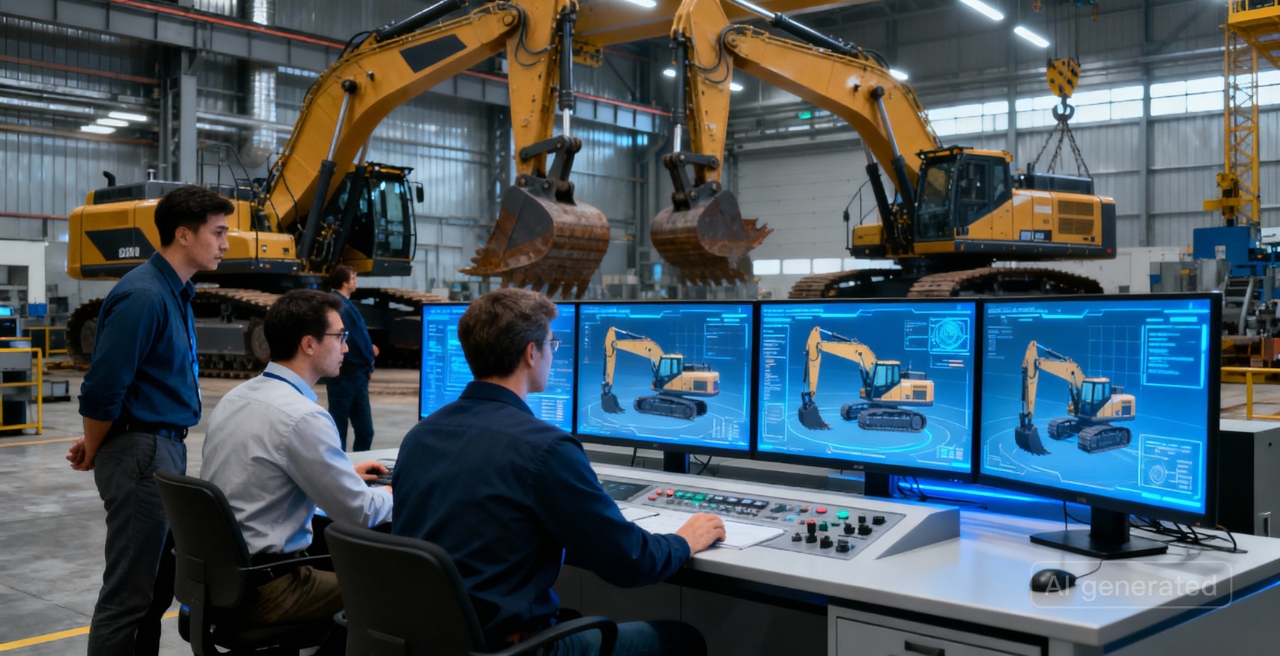Industries such as construction, mining, manufacturing and agriculture are predominantly dependent on heavy machinery and industrial equipment. The machines work in harsh conditions, and they are exposed to great pressure, load, and environmental stress.
Due to increased demand for higher performance, safety and sustainability, conventional design approaches are insufficient.
The new trend in designing heavy machines is now simulation-driven design, a computer-based design approach that is transforming the way heavy machines are conceived, experimented and optimized.
What Is Simulation-Driven Design?
Simulation-driven design integrates computer simulation directly into the early stages of engineering. Instead of relying solely on physical prototypes, engineers use digital models to predict performance, test multiple configurations, and make informed decisions before production.
This approach replaces the traditional design → build → test → redesign cycle with a more efficient, design → simulate → optimize process.
Key advantages include:
- Early detection of design flaws.
- Less prototypes and lower costs.
- Faster innovation cycles.
- Better alignment between design intent and real-world performance.
Why Simulation Matters in Heavy Machinery
The design of heavy machinery is a complex endeavor. These machines are required to withstand extreme forces while ensuring durability, precision, and the safety of operators. Conducting physical tests for each variation can be excessively costly and time-consuming.
Challenges simulation helps solve:
- High structural loads: Machines such as excavators, cranes and bulldozers have enormous levels of stress on booms and joints.
- Multiphysics interactions: Thermal, hydraulic and structural systems interact and have to be analyzed.
- Component fatigue: Equipment is subjected to repeated loading cycles which causes material fatigue with time.
- Safety standards: There are strict international standards that are demanding of reliability and performance.
Simulation enables engineers to experiment with various design conditions within a short period of time and achieve the most optimal combination of strength, weight and efficiency.
Key Applications of Simulation
The simulation encompasses all phases of the heavy machinery design process, ranging from component-level testing to comprehensive system validation.
1. Structural Analysis (FEA)
- Evaluates stresses, strains and strains under heavy loads.
- Optimizes material use and geometry for maximum durability.
- This ensures that components such as the frame, arms and chassis can withstand operational forces.
2. Thermal and Fluid Simulation (CFD)
- Studies cooling systems, air flow, and heat transfer around engines or hydraulic systems.
- Helps prevent overheating and improves fuel efficiency.
3. Multibody Dynamics (MBD)
- Analyzes the motion and stability of moving parts such as crane arms, excavator buckets, or suspension systems.
- Reduces vibration, improves comfort and enhances precise control.
4. Fatigue and Durability Testing
- Anticipates prolonged usage and pinpoints vulnerabilities.
- Emulates years of operational strain in just a few hours.
Benefits of Simulation-Driven Design
Simulation brings measurable improvements across the entire product lifecycle.
Major benefits include:
- Reduction in prototyping costs: Virtual testing eliminates many physical builds.
- Faster development: Design teams can iterate and validate ideas faster.
- Improved performance: optimized weight, load capacity and energy efficiency.
- Enhanced safety: Machines meet or exceed compliance standards.
- Predictive maintenance: Data obtained from simulation helps design components that last longer and require less maintenance.
By incorporating simulation at an early stage, organizations acquire a competitive advantage – enabling them to bring high-performing, dependable machines to market more swiftly.
Real-World Examples
Global industry leaders are already leveraging simulation to transform product design.
- Caterpillar uses simulation to analyze hydraulic systems and optimize equipment durability, significantly reducing test time.
- Komatsu employs digital twins to monitor real-time machine performance and predict maintenance needs.
- John Deere integrates structural and fluid simulation to design lightweight, fuel-efficient tractors without compromising strength.
These organizations illustrate the manner in which digital engineering is transforming conventional design methodologies.
The Role of Digital Twins and AI
Simulation-driven design is further evolving with digital twins – virtual replicas of physical machines that mirror real-world behaviour using live data.
Digital twins and AI enable:
- Continuous monitoring of performance during operation.
- Predictive analysis for wear, failure, or maintenance schedules.
- Optimizing future designs based on operational feedback.
- Making better decisions through AI-powered insights.
This approach, which is driven by data, integrates design, testing, and field performance into a cohesive and intelligent ecosystem.
The Future of Simulation-Driven Engineering
The future of heavy machinery design lies in connected, automated and cloud-based simulation systems. Engineers can now collaborate remotely, run multiple simulations simultaneously, and access powerful computing resources on demand.
Emerging trends include:
- Integration with Internet of Things (IoT) sensors to provide real-time feedback.
- Automated design enhancement through the application of machine learning algorithms.
- Emphasis on sustainability by minimizing energy consumption and material waste.
Simulation will continue to play a vital role in developing the next generation of heavy machinery – smarter, stronger and more efficient than ever before.
Conclusion
Simulation-driven design is redefining how heavy machinery and industrial equipment are engineered. This allows engineers to virtually test and refine ideas before production while ensuring safety, reliability and efficiency.
By replacing guesswork with digital precision, simulation empowers industries to innovate faster and create machines that perform flawlessly in real-world conditions. The future of industrial design belongs to those who design – and emulate – smarter.

















